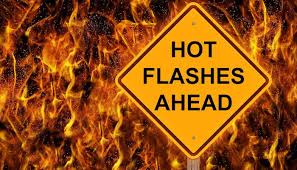Products You May Like
There was a certain amount of jubilation for the denizens of Arab countries when what is now known as “Arab Spring” came to be. This refers to waves of democratic uprisings and protests that occurred in North African and Middle Eastern countries between the years 2010 and 2011.
Back then, the people challenged the entrenched authoritarian regimes of the region. This event is so significant that teachers still assign it as a topic for research in different subjects or coursework until today.
What is the Arab Spring
The “Arab Spring” was a series of uprisings, armed rebellions, and protests against the government. It happened across several Arab countries. The Arab Spring started as a response to a very low standard of living and oppressive regimes.
How it all began
When Mohamed Bouazizi, a street vendor from Tunisia, died in January 2011, it ignited a flame that made the citizens take to the streets. Because of the harassment that the police officers subjected Bouazizi to in their attempt to shut his business down, he had no other choice but to take his own life by setting himself on fire.
His death served as a sacrifice that pushed Tunisian protesters to demonstrate against corruption in the government. Back then, President Zine al-Abidine Ben Ali was the head of the government.
One month later, after holding power for 23 years, the President had no choice but to flee to Saudi Arabia. The protests ensued, and they were well-documented then shared across various mobile devices. These served as an inspiration that the neighboring countries considered worth emulating.
Free essay samples for reference
As you may have already deduced, the Arab Spring is a very interesting and significant event. As part of your college education, this is one topic you can write about when your teacher assigns you to create an essay on violence. University students like us will always have to deal with written coursework like essays, research papers, and more. Whenever my instructors give me written assignments, I turn to Gradesfixer free essay samples. It is an amazing service where I can read essay samples on violence to inspire me to write my essay. If you need help, you can check out this service too.
The fight for democracy
The protesters based their motivation on several factors, although most analysts agree that the common factor was a push for human rights and dignity.
As in the case of many countries, the presence of religious tensions played a significant role too.
Among all of the countries involved in this event, only Tunisia shifted to democracy successfully. Egypt experienced backslide, while Syria, Yemen, and Libya spiraled up into protracted civil wars.
Since then, the situation has only worsened in most countries, and Yemen and Syria have been totally destroyed by the wars and facing a severe humanitarian crisis. It somehow again proves that protests and fights for democracy can often take a different shape altogether and in some other part of the world. But in any case, that did not stop the people from fighting for a democratic process in their countries.
A timeline of events
To give you an idea of what truly transpired in the Arab Spring, here is a chronological list of events:
- December 17, 2010 – Mohamed Bouazizi committed suicide by setting on fire outside one of the local government offices. This was his final act of protest after police officers arrested him for having no permit for his vegetable stall. Soon after, street protests across the country started happening.
- January 14, 2011 – Zine El Abidine Ben Ali, the president of Tunisia, resigns then flees to Saudi Arabia.
- February 2011 – Protestors in many predominantly Muslim countries in North Africa stage “Days of Rage” to fight against the authoritarian governments and fight for democratic reforms.
- February 11, 2011 – The Mubarak of Egypt steps down.
- March 15, 2011 – Protests for democracy start in Syria.
- May 22, 2011 – In Morocco, police officers beat thousands of protesters fighting for democracy.
- July 1, 2011 – The voters in Morocco approve the constitutional changes that limit the country’s power of the monarchy.
- August 20, 2011 – Rebels in Libya launch a battle in an attempt to take control over Tripoli.
- September 23, 2011 – The citizens of Yemen hold a large protest called the “Million Man March” for democracy.
- October 20, 2011 – Rebels capture Colonel Muammar Qaddafi, the Libyan dictator. They torture and kill him.
- October 23, 2011 – Tunisia holds its first democratic parliamentary elections.
- November 23, 2011 – Ali Abdullah Saleh, the Yemen dictator, signs a power-sharing agreement.
- November 28, 2011 – Egypt holds its first democratic elections for parliament.
Conclusion
Looking back, we can now see some social, economic, and political gains for some of the region’s denizens. However, the same phenomenon has also sparked negative effects in many parts of the region. This is just a short overview of the Arab Spring. With this background, you can study the phenomenon further if you need it for your studies.

